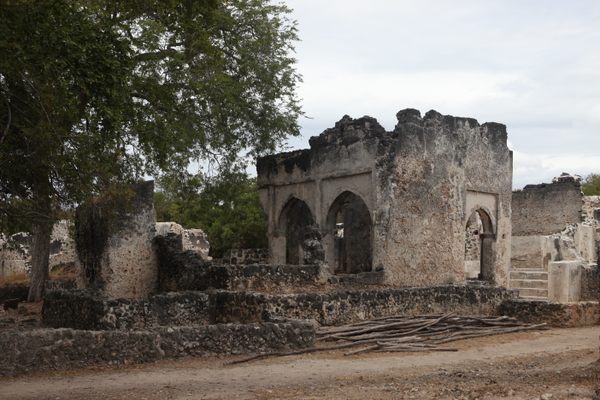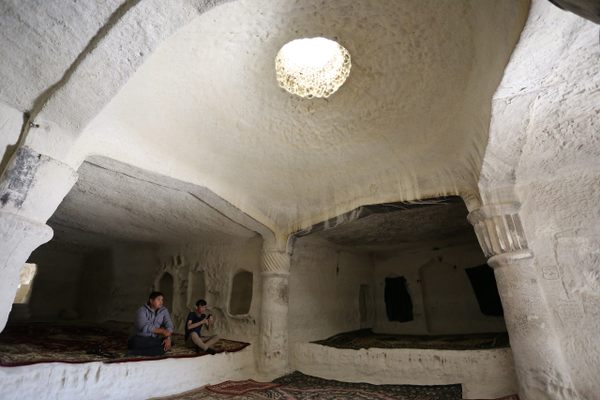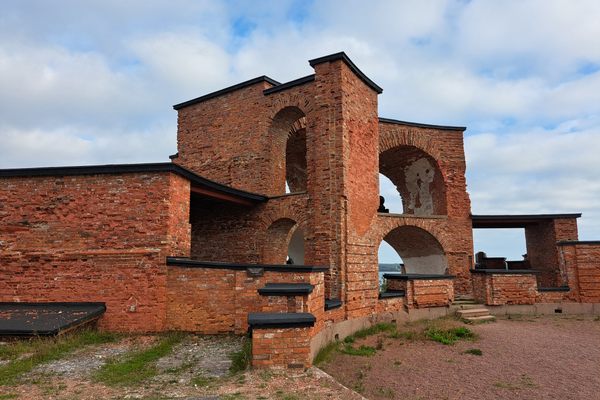About
Jagged walls of stone and coral rising up amidst coconut palms and baobabs are all that remains of a port city from a golden age of trading. Back in the city's heyday, these buildings would have been covered in bright white plaster adorned with intricate carvings. The island of Songo Mnara, located off the southern coast of Tanzania, is quite small, covering just over three square miles. But the 500-year-old ruins that lie at the island's northern end loom large in history.
Songo Mnara was an offshoot of the older and larger city of Kilwa Kisiwani, which was located on an island slightly farther north. Between the 13th and 16th centuries, Kilwa Kisiwani and Songo Mnara were central to the Indian Ocean trade and the Swahili Coast Culture. They were two of the many thriving Islamic settlements in East Africa, from Somalia to Mozambique, which served as conduits for trade with Arabia, India, and China. Goods from the African mainland such as gold, ivory, timber, and textiles, were traded for silver, gemstones, perfumes, and pottery.
While Kilwa developed over many centuries, Songo Mnara was a planned city that came together much more quickly. It was only occupied for about 150 years, starting in the 14th century. Though centuries have passed, the now-remote site has gone largely undisturbed, so its distinct urban structure has been preserved. That structure gives modern archaeologists a glimpse into the Swahili culture at its height.
At Songo Mnara, archaeologists have identified dozens of residences, six mosques, and a number of tombs. Many of the homes include spaces for hosting traveling merchants and other guests. Merchants who arrived on monsoon winds would often stay for weeks or even months, awaiting a change in the winds that would allow them to return home. It was this kind of arrangement that facilitated the cultural exchange that made Songo Mnara so special.
As European explorers started staking claims to African land, the stone towns of the Swahili coast began to disappear. In 1505, the Portuguese established a fort at Kilwa Kisiwani, which marked the start of its decline.
Archaeologists continue to excavate the ruins at Songo Mnara, which was designated a UNESCO World Heritage Site in 1981. With each new fragment of pottery and cache of coins found at the site, another piece of this site's rich history is revealed.
Related Tags
Know Before You Go
The only way to visit Songo Mnara is via boat from Kilwa Masoko. The boat ride from Kilwa Masoko to Songo Mnara takes about two to three hours.
Community Contributors
Added By
Published
May 8, 2023
Sources
- https://zamaniproject.org/site-tanzania-songo-mnara.html
- https://jeffrey-fleisher.scholar.rice.edu/publications/mosques-songo-mnara-their-urban-landscape
- https://www.archaeology.org/issues/501-2303/features/11204-swahili-coast-water-storage https://www.wmf.org/project/historic-sites-kilwa
- https://www.archaeology.org/issues/116-1401/features/1634-swahili-coast-towns









































